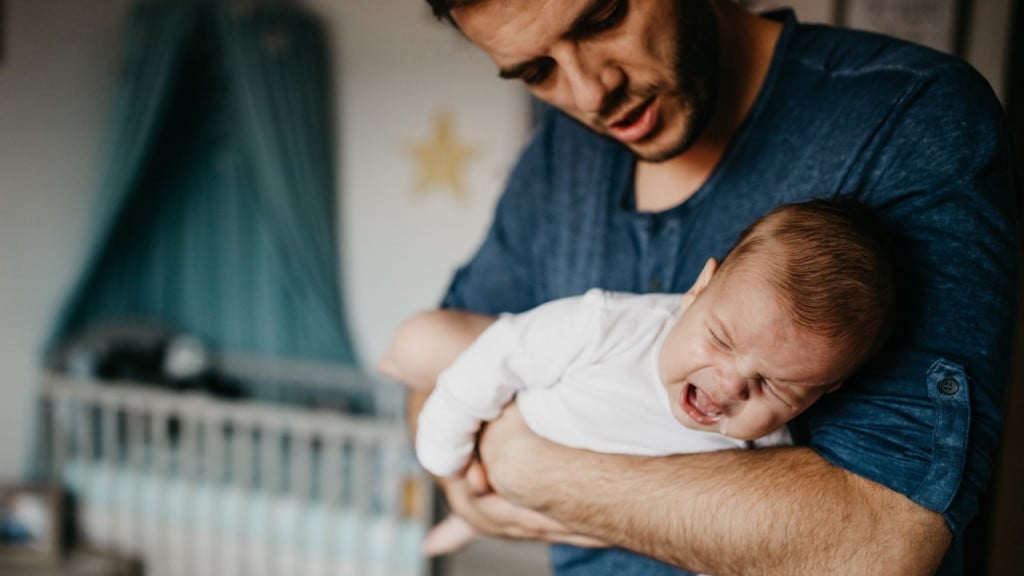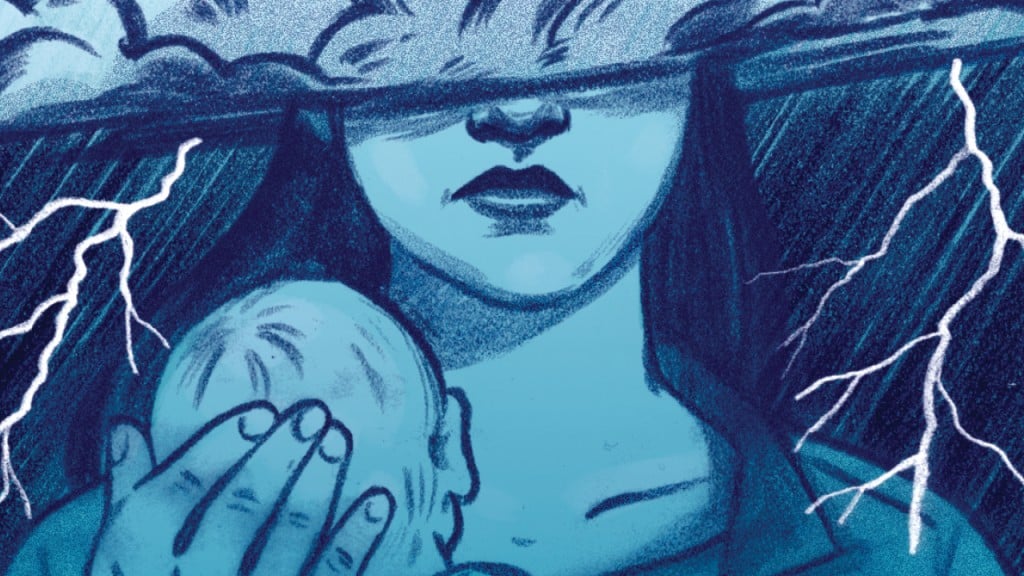“Marlo has been sleeping in her crib for over 30 MINUTES. I feel so alive…. Wait, do you think she’s still alive?” I sent my husband this text in a fit of disbelief when our daughter was 10 months old. She wouldn’t nap for more than 20 minutes when placed in her crib, so we’d spent the entire winter taking turns babywearing her for three back-aching 90-minute naps a day. Which means we spent the winter doing little else but obsessing over our baby sleep schedule and napping our daughter, no matter the weather.
This is not how I’d imagined my mat leave. I’d pictured my friends and I, all home with new babies, bringing our bundles to the brewery, strolling them to the farmers’ market, and forming our own team of tiny, unsynchronized swimmers at the community pool.
And for the first few newborn months, we were lucky: Marlo was a shockingly good sleeper who slept from 10 p.m. to 6 a.m. most nights and snoozed not only through brewery visits, but also through two cross-Canada flights and the house-rattling renovations next door.
But then, at around four months, she started to fight sleep as if her UFC belt were on the line. I knew this was the four-month regression, when her sleep cycles would change forever, waking her up every 90 minutes or so. It was now my job to teach her how to self-soothe through those wake-ups and put her on a proper sleep schedule.
So I dutifully read all the baby sleep books, usually when I should’ve been sleeping. (“Sleep when your baby sleeps” should be at the top of the Things Not to Say to a New Parent list.) Instead of being a comfort, these books—combined with copious googling—kicked up a squall of anxiety. Not only because every expert makes a reasonably compelling case for his or her very different approach, but because they suppose that you, the parent, can crack the code to your baby’s sleep if you just find the right combination of total darkness, optimal room temperature, gentle white noise, time between sleeps, soothing shushes and pats and developmentally appropriate cry-it-out sessions.
 9 reasons sleep training didn’t workThe stakes felt astronomically high, because I knew—from reading all the books!—that a baby’s brain development happens during sleep. That’s the one thing the sleep experts agree on: not getting enough sleep is bad for a baby’s brain. One of the more vivid cautions comes from Marc Weissbluth, the author of Healthy Sleep Habits, Happy Child: “If your child does not learn to sleep well, he may become an incurable adult insomniac, chronically disabled from sleepiness and dependent on sleeping pills.” I pictured future Marlo downing Ambien with vodka and telling her therapist that her mother never managed to get her to nap for more than 20 minutes at a time.
9 reasons sleep training didn’t workThe stakes felt astronomically high, because I knew—from reading all the books!—that a baby’s brain development happens during sleep. That’s the one thing the sleep experts agree on: not getting enough sleep is bad for a baby’s brain. One of the more vivid cautions comes from Marc Weissbluth, the author of Healthy Sleep Habits, Happy Child: “If your child does not learn to sleep well, he may become an incurable adult insomniac, chronically disabled from sleepiness and dependent on sleeping pills.” I pictured future Marlo downing Ambien with vodka and telling her therapist that her mother never managed to get her to nap for more than 20 minutes at a time.
The development of another human’s brain is a massive responsibility that makes every midday snooze fraught, particularly when almost all sleep schedule experts drill into you that daytime sleep begets good nighttime sleep. So basically: bad nap, bad night; bad night, bad nap again; and on and on until, apparently, your sweet babe is an Ambien-addicted insomniac who won’t return your calls. This is the kind of circular thinking that led my husband and me to babywear Marlo for naps-on-the-go, multiple times a day. She was waking up three or four times in the night, which was why we were desperate to “fix” the nap issue.
This is also how I ended up ankle-deep in snow, in my socks, last February, having gone out the front door of our house and walked around to the back door to avoid creaking the 100-year-old wood floors outside Marlo’s room. And how I ended up perched on a structurally unsound Ikea dresser tinfoiling the window of an Airbnb to block out any light.
It’s also how my mat leave friends and I ended up trapped in our own solitary nap jails. Unable to sync naps or leave our homes for long stretches, we didn’t do much brunching. Instead, we texted—mainly about naps:
“Are we still on for tonight?”
“Hope so, but it depends how this nap goes. If she doesn’t nap, tonight will be a shit-show.”
When we finally did get together, we talked nap math: When did your baby go from three naps to two? Is the 2-3-4 nap schedule really as magical as people say it is? How many hours does yours stay up for before the first nap? We couldn’t help ourselves: The shape of our days, and often our sense of parenting failure or success, hinged on how many winks our kids could catch.
My husband and I talk about having a second kid, and I have to confess that I don’t dread the nine months of hormonal havoc, or even labour. I dread the naps.
So what would we do differently next time around? The changes that would improve our lives most tangibly are tweaks to our perspectives:
Expectations vs. reality
Take whatever expectations you may have, whether about midday brunches or napping while your child naps (LOL), and stuff them in the Diaper Genie, along with the pre-baby bras you used to wear. Your new job is full-time sleep custodian. It’s an important and exhausting job that will consume a lot of your energy. Accept it.
Don’t devote every waking moment to baby sleep schedule research
Make a no-nap-talk rule for when you hang out with other new parents. It’s beautifully bonding to commiserate, but enabling a mutual obsession isn’t. Read anything other than sleep books (or just choose one science-backed book, commit to it, and spare yourself the endless googling of “help + baby won’t nap”).
Train someone else to help out
Get your kid comfortable with a partner, relative or babysitter who can put her down for naps, so you can go on vacation once in a while. (And by “vacation,” I mean escaping to a movie matinee where you can order nachos and forget about naps for two hours.)
Know you’re doing your best
Try not to stake your self-worth as a parent on achieving perfect naps, because so much of it is out of your control anyhow. Maybe your kid’s early wake-up was caused by the sliver of light seeping under the door, or maybe not. All you can do is provide a safe and comfortable environment with consistent opportunities for sleep, and trust that your baby will figure it out in her own time. She will sleep eventually. And so will you.
Read more:
The drowsy-but-awake baby sleep advice is pretty much BS
Got a baby with serious bedtime FOMO?
The post I had to stop obsessing over my baby’s sleep schedule for my own mental health appeared first on Today’s Parent.


